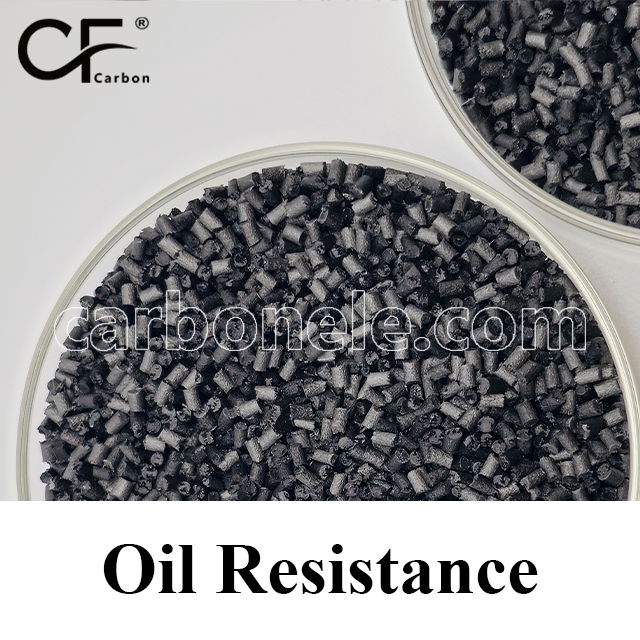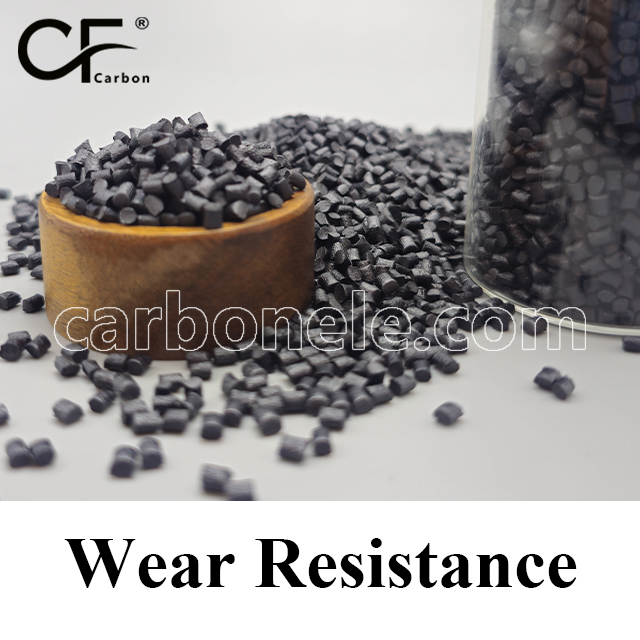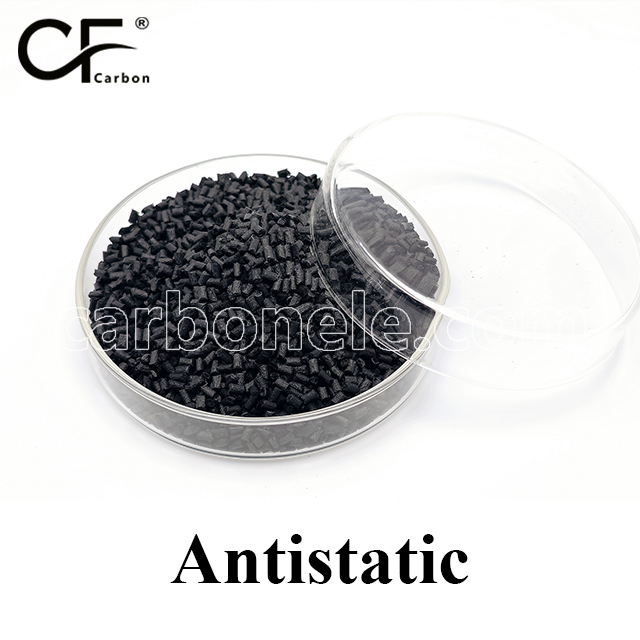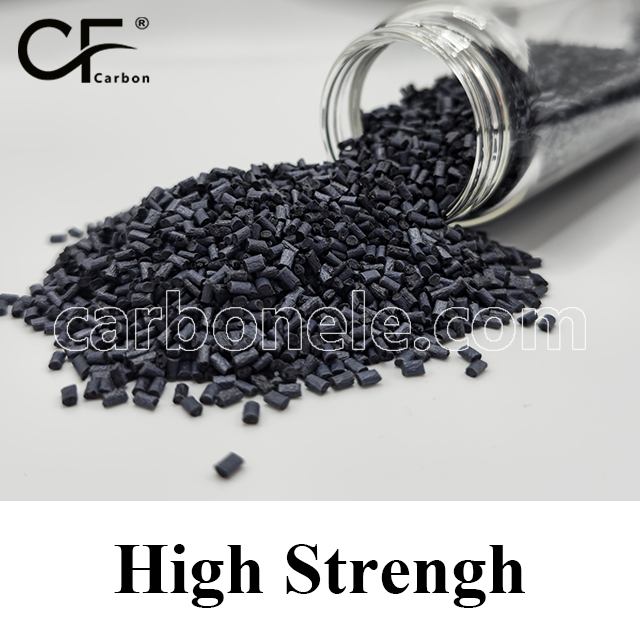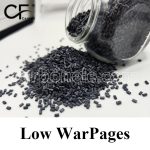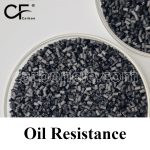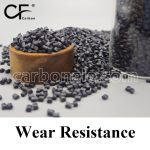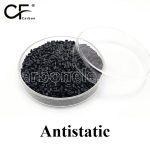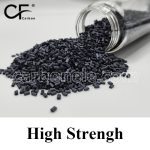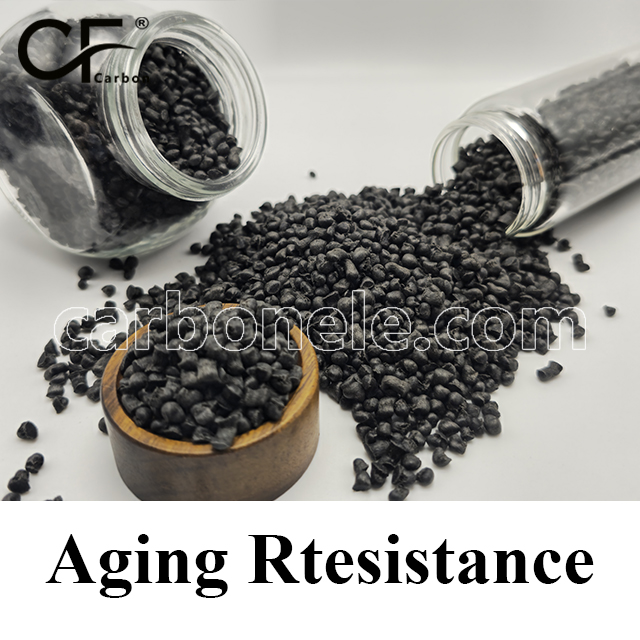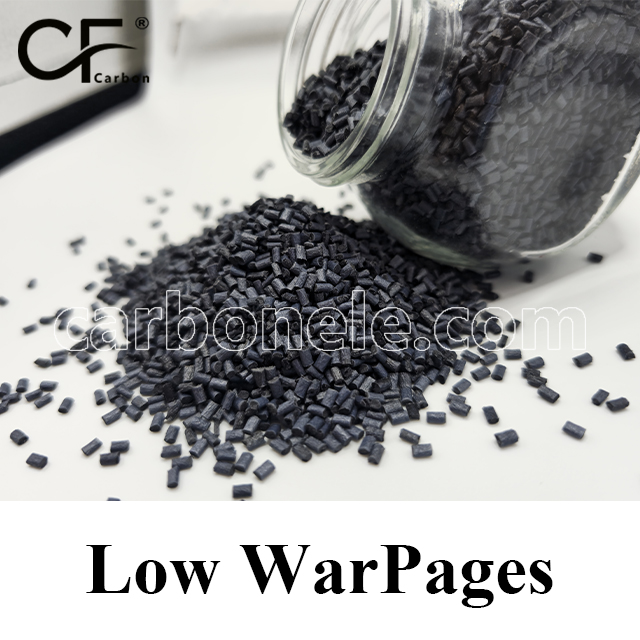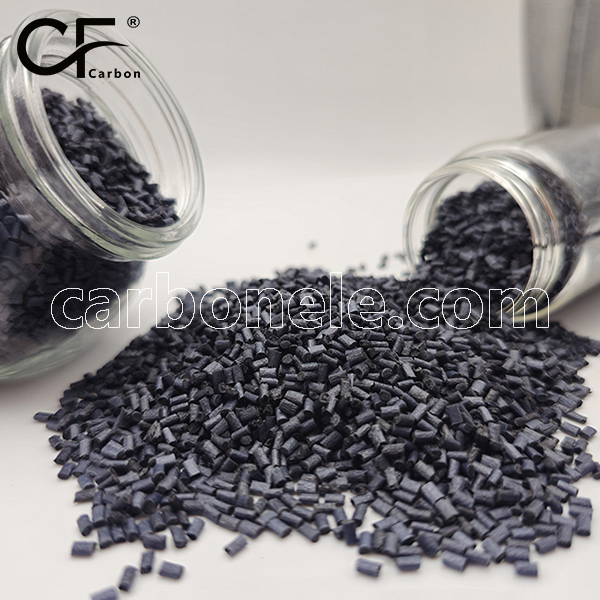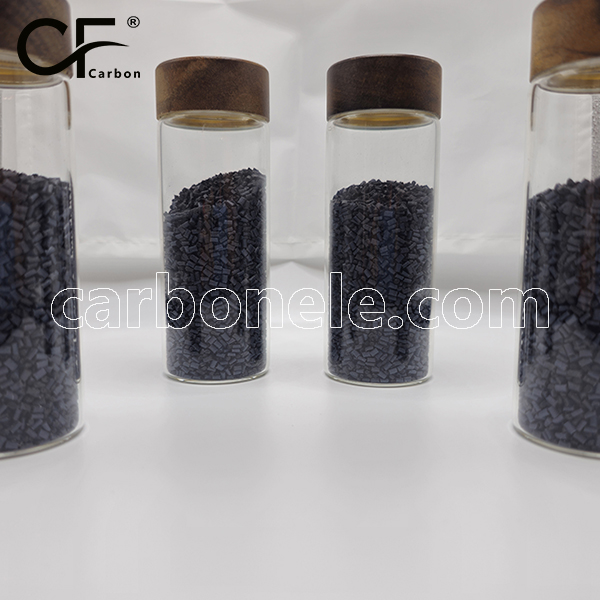PPS-CF60 is a high performance thermoplastic reinforced with 60% carbon fiber, offering exceptional stiffness, strength, and dimensional stability. Designed for extreme environments, it withstands continuous use up to 250 °C, resists aggressive chemicals, and replaces metal in structural, high load, and high temperature applications. Ideal for aerospace, automotive, and industrial components where rigidity and precision are critical.

Injection molded PPS-CF60 for functional parts
- Model number: PPS-CF-BCA6
- Matrix Resin: Polyphenylene Sulfide (PPS)
- Reinforcing Filler: Carbon fiber
- Appearance: Granules
- Grade: Injection/extrusion grade
- Packaging: 25kgs/bag
PPS-CF60 | 60% Carbon Fiber Reinforced Polyphenylene Sulfide
PPS-CF60 is an ultra high performance, semi crystalline thermoplastic composite reinforced with 60% carbon fiber, engineered for applications requiring maximum strength, stiffness, and dimensional stability under extreme thermal and chemical exposure. With its extraordinarily high carbon fiber loading, PPS-CF60 pushes the limits of polymer based structural materials, offering metal like mechanical performance while maintaining the inherent chemical and thermal resilience of PPS.
Compared to lower carbon fiber grades such as PPS-CF30, PPS-CF40, and PPS-CF50, PPS-CF60 delivers exceptionally high flexural modulus, tensile strength, and creep resistance, making it ideal for precision components in high stress, high temperature, and chemically aggressive environments.
Core Performance Highlights
Mechanical Properties
Carbon Fiber Content: 60% (short to medium chopped fibers, densely packed)
Tensile Strength: ≥ 200 MPa
Flexural Modulus: ~20–22 GPa
Elongation at Break: ~0.7%
Notched Izod Impact: ~30–35 J/m
→ Offers extreme stiffness and dimensional integrity under both static and dynamic loads. Ideal for replacing aluminum and other metals in weight sensitive applications.
Thermal Resistance
Heat Deflection Temperature (HDT): ≥ 285 °C
Continuous Use Temperature: Up to 250 °C
→ Maintains structural reliability during continuous thermal cycling and in high heat industrial environments, with minimal deformation or relaxation over time.
Environmental & Chemical Durability
Moisture Absorption: <0.02% — nearly impervious to humidity
Chemical Resistance: Outstanding — highly resistant to acids, bases, fuels, oils, and industrial solvents
→ Ensures long term mechanical and dimensional stability in submerged or chemically aggressive operating conditions.
Processing & Manufacturing
Molding Methods: Injection molding (high pressure), compression molding
Surface Finish: Matte to textured finish with visible carbon fiber texture
Tooling Requirements: Requires high wear, high temperature tooling, preferably with ceramic or hardened steel inserts
→ Best suited for tight tolerance, high volume production where performance, stability, and longevity are critical.
Target Applications
Automotive & Mobility
Structural brackets, engine covers, transmission components
→ Lightweight alternative to cast aluminum or magnesium in under hood or powertrain zones with exposure to fuel, oil, and heat.
Aerospace & Defense
Reinforcement frames, thermal protection panels, mechanical interfaces
→ High stiffness and temperature tolerance make it ideal for weight sensitive structural components in aircraft and spacecraft.
Industrial & Mechanical Equipment
Bearing supports, gear housings, precision pump/valve bodies
→ Maintains mechanical strength and geometry in chemical plants, oil and gas systems, and high load rotating equipment.
Electronics & Electrical Systems
High power electrical housings, PCB carriers, battery enclosures
→ Stable dielectric properties and thermal performance for high voltage, high temperature environments.
Performance Summary Table
| Property | Value / Description |
|---|---|
| Carbon Fiber Content | 60% (Carbon Fiber Reinforced) |
| Tensile Strength | ≥ 200 MPa |
| Flexural Modulus | ~20–22 GPa |
| Elongation at Break | ~0.7% |
| Notched Izod Impact | ~30–35 J/m |
| Heat Deflection Temp. | ≥ 285 °C |
| Long Term Service Temp. | Up to 250 °C |
| Moisture Absorption | <0.02% — near-zero, highly dimensionally stable |
| Chemical Resistance | Excellent — fuels, oils, acids, bases, solvents |
| Wear Resistance | Extremely high — ideal for wear and load critical applications |
| Processing Methods | Injection molding, compression molding |
| Surface Finish | Matte to textured with visible carbon structure |
| Dimensional Stability | Exceptional — retains geometry under prolonged stress and heat |
If you want to get more information about PPS-CF60, you can visit our Youtube.
Friction coefficient of PPS-CF
The friction coefficient of PPS (Polyphenylene Sulfide) typically ranges from 0.3 to 0.45, while PPS-CF (Carbon Fiber Reinforced Polyphenylene Sulfide) has a lower coefficient, generally between 0.2 and 0.35. The addition of carbon fiber improves hardness, wear resistance, and reduces friction, making PPS-CF more suitable for high-load, high-temperature, and high-friction applications.

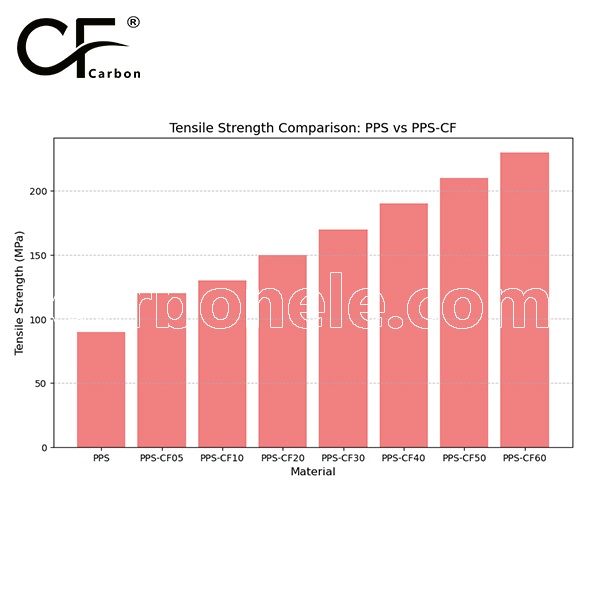

Frequently Asked Questions
Carbon (Xiamen) New Material Co., Ltd. aims to provide buyers with "one-stop" worry-free high-quality services. Here you can find all information about carbon fiber engineering plastics. If you still have questions, please send us an email for consultation!
-
How can I contact the manufacturer of a product that interests me?
When you find a product you are interested in, you can contact the manufacturer directly by sending an email and we will get back to you as soon as possible.
-
How do I find the products that interest me?
All you need to do is enter the keyword, product name in the search window and press the Enter key on your keyboard. Your search results page will then be displayed. You can also search within the product category pages on the home page. Each category is divided into subcategories, allowing you to refine your search and find products that interest you.
-
Where will I find a buying guide?
Please contact our after-sales service directly and we will provide you with a comprehensive operating guide.
-
What are CF Reinforced Thermoplastic Composites?
CF Reinforced Thermoplastic Composites are materials where carbon fibers are incorporated into a thermoplastic matrix. They combine the strength and stiffness of carbon fibers with the processability and recyclability of thermoplastics. For instance, they are used in automotive parts like bumper beams.
-
What are the benefits of CF Reinforced Thermoplastic Composites over traditional composites?
The key benefits include faster production cycles, easier recyclability, and better impact resistance. They also offer design flexibility. An example is in the manufacturing of consumer electronics casings where complex shapes can be achieved more easily.
-
How are CF Reinforced Thermoplastic Composites processed?
Common processing methods include injection molding, extrusion, and compression molding. Injection molding is widely used for mass production. For example, in the production of small components for the medical industry.
-
What industries use CF Reinforced Thermoplastic Composites?
They are utilized in aerospace, automotive, medical, and sports equipment industries. In aerospace, they can be found in interior components. In the medical field, they might be used in prosthetics.
-
How does the carbon fiber content affect the properties of the composites?
Higher carbon fiber content generally leads to increased strength and stiffness but may reduce ductility. A moderate content is often balanced for specific applications. For example, a higher content might be preferred in structural parts of a race car.
-
What are the challenges in using CF Reinforced Thermoplastic Composites?
Challenges include higher material costs, complex processing equipment requirements, and ensuring uniform fiber dispersion. Issues with adhesion between the fibers and the matrix can also arise. An example is in achieving consistent quality in large-scale production.








